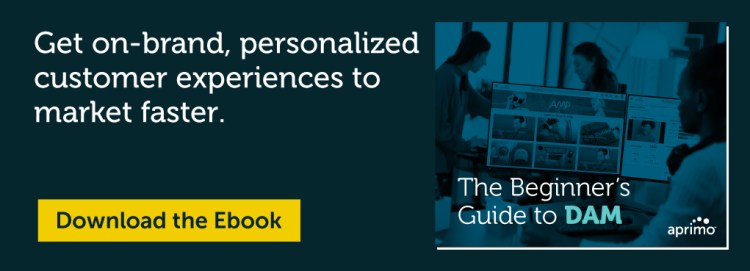What is Content Governance?
Content governance is the process of creating, organizing, and managing content across an organization in a way that meets organizational needs. This process includes setting rules for content creation, publishing, storage, and retrieval.
Content governance aims to ensure that all content is up-to-date, accurate, and compliant with applicable laws or regulations. It’s a process to help organizations maintain better control over their data so that it is accessible and usable when needed.
Why is Content Governance Important?
Content governance provides the structure and process for businesses to scale their content operations and maintain visibility into their assets. Businesses control asset creation, storage, and disposition as they move through the content lifecycle.
Plus, content governance helps corporate librarians and teams accomplish the following:
- Understand the needs of the organization
- Maintain accurate information on every piece of content
- Manage the increasing body of data and assets a business creates
Top Benefits of Content Governance
When evaluating the need or performance of your content governance plan, consider these benefits:
Better communication: Good governance policies provide a framework within which creative teams and stakeholders collaborate and create effectively.
Higher ROI: Content development guidelines save teams time and effort in development. They set up assets for easy repurposing and omnichannel distribution. After all, reuse is a key value driver of ROI. Over 40% of respondents to SEMRush’s 2023 State of Content Marketing report said updating existing content boosted their content marketing value.
Stronger compliance: Content governance guidelines ensure adherence to compliance standards and industry regulations.
Better customer experience: Improved messaging and delivery result in consistent messaging that target the right audience with relevant content. It’s not just about engagement with content. Over 70% of customers won’t buy unless they trust your brand, according to PwC.
Improved branding: Content governance establishes a clear brand identity by centralizing important tools like the brand guidelines or style guide, social media standards, templates, and content workflows for content creators.
Risk reduction: Guidelines and versioning controls reduce the risk of duplicate assets, incorrect information, and outdated content. Great content is fresh, so publishing content correctly the first time is instrumental to your customer initiatives.
Ease of use: A good content governance plan makes it easier to create, retrieve, use, and sunset content. It makes everything from project management to content approval easier and cleaner.
Higher cost savings: Reduces costs by eliminating redundant processes and reducing storage costs.
More robust security: Straightforward policies and permissions rules increase security by controlling who has access to sensitive information.

5 Key Elements of Content Governance
Content governance goes beyond policies. A strong governance program relies on strong technical frameworks.
Incorporating the right software into your program makes content governance more scalable. Build a program around these five elements of digital governance to improve your results:
1. Metadata
Metadata is information that provides context to digital content. It helps to categorize content so it can be tracked and managed more efficiently. Metadata is essential to effective content governance because it enables easy identification of assets. Well-structured metadata ensures every asset is associated with relevant subjects or topics.
2. Tagging
Tagging is another component of contextual search because they provide context and structure around your digital assets. Tagging helps categorize content into different topics or subject areas, making finding specific types of content easier and more efficient. Tags are a key part of the indexing process and help the system search for relevant content quickly. They provide a way to organize content in a hierarchy for data organization and management purposes.
3. Centralized repository
Uploading to a centralized repository helps teams accurately store any relevant information. Storing data in this way makes it easier to share with other users, collaborate on projects, and keep track of changes over time. It increases the efficiency of content discovery and provides an effective method for cataloging and preserving digital assets.
4. Role-based permissions
Role-based permissions and modular content features allow users to access and manipulate content to meet organizational needs. Administrators can ensure that only trusted individuals can access and control the content by limiting user access to certain functions. This reduces the risk of data leakage or misuse, making it easier to manage who has access to what assets for creation, reuse, and distribution. Role-based permissions help protect content from unauthorized changes and ensure that all users have the right level of access to do their job.
5. Digital rights management
Digital rights management (DRM) provides a way to track and control the permitted use of digital assets. It prevents unauthorized users from accessing or using a company’s content without permission. DRM also prevents unauthorized duplication and redistribution of protected content, safeguarding intellectual property rights. DRM is essential for content governance as it reduces the risk of unauthorized use of assets (such as using assets with expired licenses, geographic restrictions, or release embargoes). Using unauthorized assets is a potentially expensive and credibility-damaging mistake for a marketing team.
Common Challenges in Content Governance
The job of structuring content management systems is expanding all the time. Content librarians and teams must ensure there are well-organized hierarchies of data and assets, clear roles and responsibilities outlined for all users, and appropriate access protocols for data.
Organizations must ensure that changes do not conflict with existing rights and permissions already granted to other users or groups. This need for both structure and flexibility presents some unique challenges for the team, such as the following:
- Siloed collaboration: Consistency springs from team connections. A lack of asset visibility and poor communication may hinder the team’s ability to produce consistent, on-brand results. A central source of truth, like a platform with good team communication and access to essential documents like content briefs, editorial guidelines, and more, will significantly reduce data siloes.
- Poor user adoption: If users don’t understand the value or benefits of content governance, they won’t be excited to use it. This increases the risk of data security issues and poor user experience. When implementing a new content governance system, pair the transition with solid change management and corporate communication to ensure teams are on board with the changes.
- Outdated policies: Monitor and continually change your policies and documentation, since best practices change over time. Ineffective data governance can cause organizational harm, such as non-compliance, reputation issues, or financial losses.
- Inadequate resource allocation: Content governance requires time and resource investment to ensure success. Be sure your policies provide adequate staff, budget, and technological resources to support your content governance system.
- Lack of user education: If users don’t understand how to use the technology or why they need it, it can lead to poor adoption and a lack of compliance. Educate users on the importance of content governance and ensure they are familiar.
How to Create a Content Governance Plan
Creating a content governance plan requires careful consideration and thought. Here are the steps to create a successful strategy:
1. Set objectives
Establish clear, measurable objectives as a first step in creating an effective content governance plan. Determine your company’s KPIs for the new program, the gaps you’re trying to fill in your current process, and the technology and tools you’ll use to drive organization and compliance.
2. Create policies and internal documents
Develop policies for managing the creation, review, approval, and publication of content. Here are some key points to consider:
- The roles and responsibilities of various contributors
- Review processes
- Acceptable formats and technologies
- How you will meet legal and regulatory requirements
- How you can update or retire content
A fully-formed content governance program should include two key internal documents:
- A DAM System Mission Statement, which explains what your Digital Asset Management system does to your users and stakeholders. It can also list the operations involved in the DAM operations.
- A DAM Governance Mission Statement to communicate the value and purpose of the DAM. The Governance Mission Statement should also communicate the Principles of Governance.
3. Identify champions and key contacts
Your content governance program must have an administrative structure to support its goals. You should identify:
- A champion to promote the content governance project and drive organizational change.
- A Digital Asset Management (DAM) business owner to administer the rollout of your technology adoption and onboarding.
- A program manager to document roles and permissions, manage changes or updates, build out the roadmap and milestones for the project, and provide communication about progress.
- A DAM librarian to organize, curate, and maintain your digital media assets.
4. Establish processes
Identify processes to create, review, approve, and publish content. This way, you’ll ensure accuracy and consistency across teams, stakeholders, and channels. Develop clear guidelines for content processes and workflows. Define the steps used to create, store, publish, and archive content.
5. Monitor progress
Track progress against established objectives to ensure goals are met on time and within budget and technological constraints. Ensure quality content is properly published to the correct channels and monitor performance. Leverage analytics and other tools to measure the effectiveness of your organization’s content strategy. Analyze your content’s performance against objectives and make data-driven decisions on upcoming campaigns.
How Does Software Improve Content Governance?
Aprimo DAM streamlines content governance by automating review and approval, simplifying creation and publication, and automatically handling permissions and DRM. With the help of a DAM, companies gain visibility into the entire content lifecycle from development to retirement.
- Advanced and contextual search capabilities to quickly find specific content pieces
- Reporting tools to provide insights into how the content performs across channels and campaigns
- Collaborative editing and communication tools to increase content team members? productivity and effectiveness.
Read our ebook to see how Aprimo DAM empowers fast-growing companies to create and manage their content at scale.



